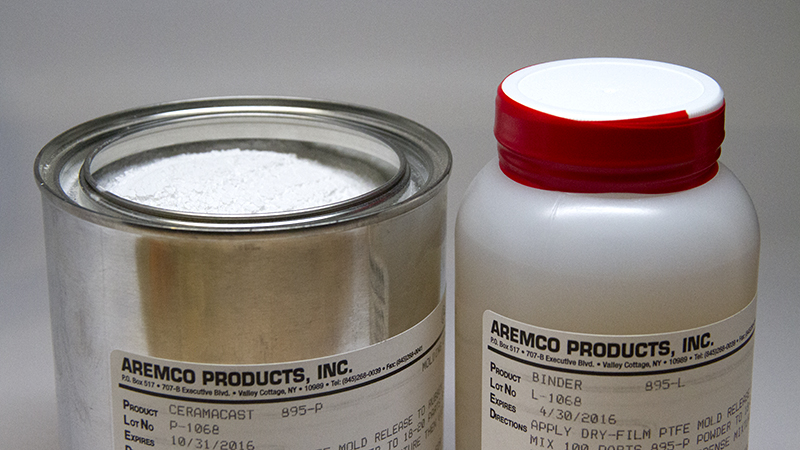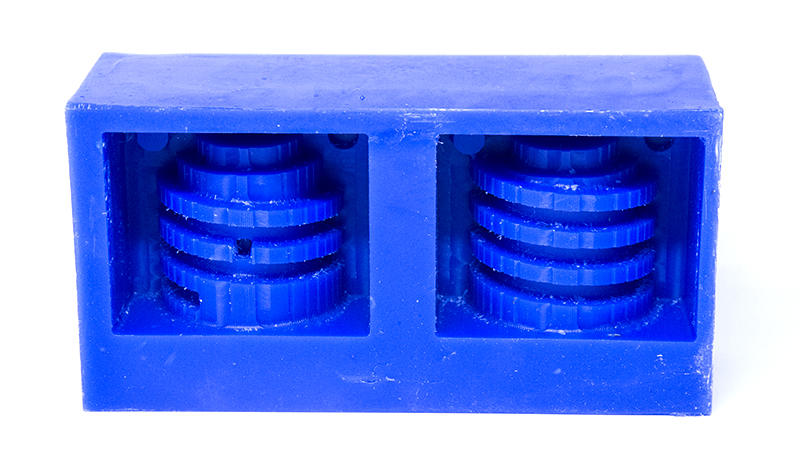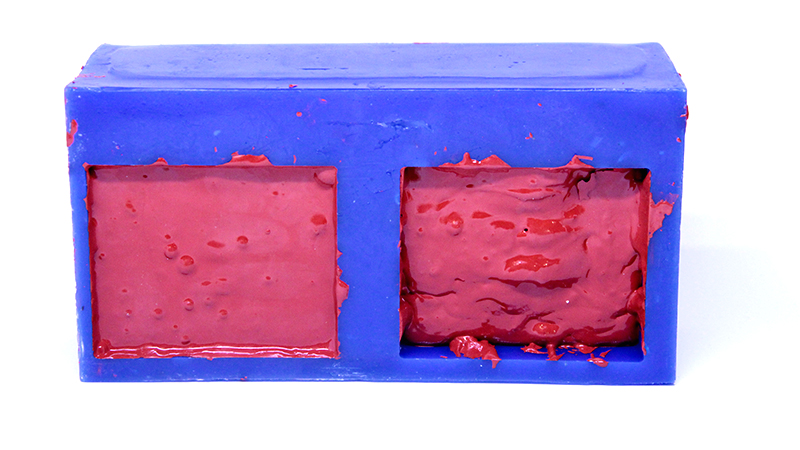In week 7, I am revisiting the design for a custom ceramic kiln that I began in assignment 5. After milling toxic ceramic fiber composite material with decent success, we wanted to push the design further and find something that would not only take the form we needed and maintain its function at high temperature, but also something that was mechanically robust. As I mentioned then, the purpose of the nozzle and kiln development is to increase the working lifetime of the parts, as unlike almost any other kiln, they are under extremely regular movement, contanct with each other, and heating cycles. At Neils suggestion in class, I ordered a castable form of alumina that has been designed to make high precision and high temperature tooling, seemingly most often in the electronics field.
The material comes as a powder, mostly made up of aluminum oxide, and a binder. Once mixed, the material will set in sixteen to twenty four hours, and the green form requires a relatively low temperature bake at two hundred degrees for a further 8 hours. It's a lot of work relative to other castables, but if it produces a highly complex ceramic part which servers our purposes thermally, as well as being totally robust within the glass 3D printing platform, it should be entirely worth it.

The first step of course, is to mill out a mold in wax. This takes the same form of half the flip milled fiber composite mold, plus some changes for the different process. I've given it some female and male peges to align the mold as well as brought the mold wall up flush with one side of the helical form so that it can be easily poured into. I also switched the direction of the finsh cut compared to the previous version in the interest of time and quality.

Once the wax is milled, I can make a rubber mold to be filled with ceramic slurry. According to specification sheets from the Smooth-On materials company, many of their silicone and urethane rubbers, including OOMOO, can take up to a couple hundred degrees, which theoretically would be enough to take the baking process required by the ceramic. To be on the safe side, as well as to work with a material which was new to me, I used something called Mold Max 60. It is a tin cure silicone rubber specifically designed for high temperature tooling and can be used up to 560º F. Unfortunately for me, it was massively more viscous than expected (potentially also I'm not sure how old it was), and a lot harder to work with than some of the other rubbers I have used. On top of that the cure time is twenty four hours compared to Oomoo's 75 minutes. If the feature precision is not acceptable with this casting, I think I'll try again with some lower temp rubbers.

